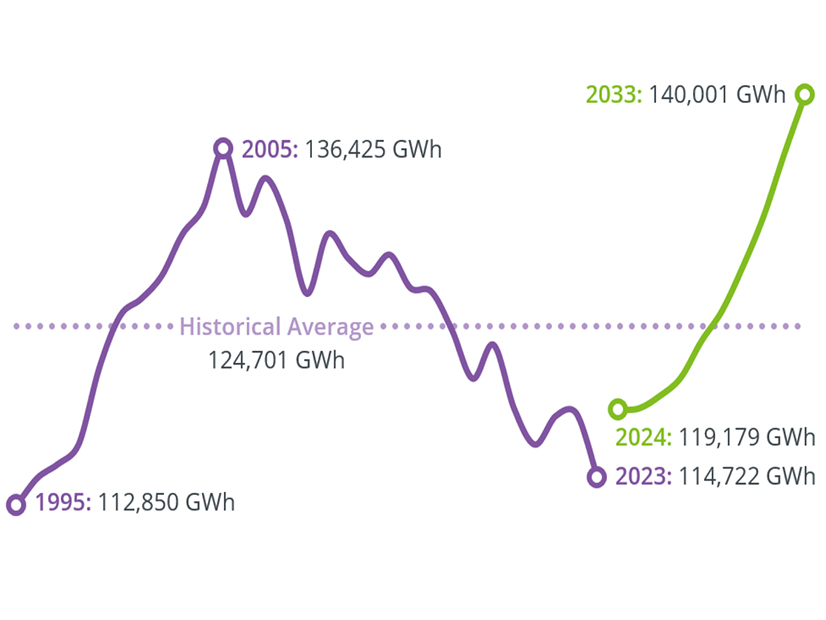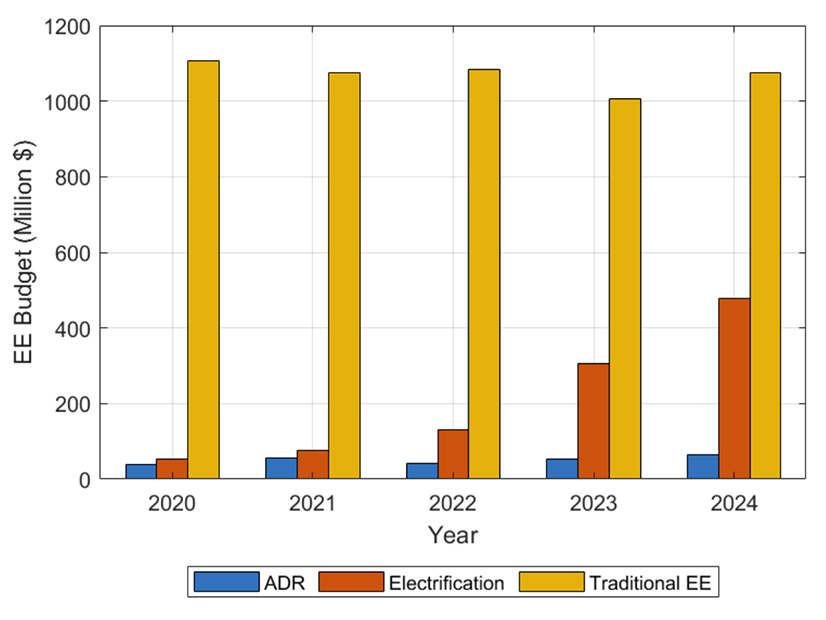ISO-NE predicts New England’s peak load will increase by about 10%, and electricity consumption by 17%, by 2033, according to its 2024 Capacity, Energy, Loads and Transmission (CELT) report, released May 1.
The increasing peak load forecast is driven by increasing transportation and building electrification, ISO-NE said. The estimate is a slight decrease from the peak load projections in the 2023 CELT report. (See ISO-NE Decreases Its 10-year Peak Load Forecast.)
While the New England grid currently peaks in the summer, ISO-NE projects the winter peak to grow significantly faster, with a projected increase of about 33% over the next decade.
In 2033, ISO-NE expects the region’s summer peak to reach 27,052 MW and the winter peak to reach 26,768 MW. The RTO expects winter peaks will surpass summer peaks in the mid-2030s because of heating electrification.
The New England power system reached its peak load in 2023 on Sept. 7, topping out at just over 24,000 MW.
Energy use in New England has declined since the early 2000s, largely because of energy efficiency programs and behind-the-meter solar. However, ISO-NE projects the amount of energy efficiency participating in its capacity market to decline in the coming years as states shift their focus toward building electrification and heating retrofits.
In a recent presentation, ISO-NE noted that state energy efficiency budgets “have remained consistent, while production costs have increased.” In contrast, states have dramatically increased funding for electrification programs over the past four years and have slightly increased funding for active demand response.
ISO-NE projects energy efficiency resources that expire and exit the market will outpace energy efficiency resource additions by 2029.
“Since [Forward Capacity Auction] 14, the amount of expiring EE measures has been surpassing the pace of new EE cost-of-service agreements entering the market,” ISO-NE spokesperson Mary Cate Colapietro noted.
And 2024 marks the fourth consecutive year in which the RTO’s energy efficiency forecast has declined.
While ISO-NE indicates it expects BTM solar capacity to continue to grow at about 1,000 MW per year over the next decade, it projects solar will reduce the region’s peak load by just over 200 MW by 2033. (See NEPOOL Participants Committee Briefs: May 3, 2024.)
Colapietro noted that increasing amounts of BTM solar “will shift the timing of peaks to later in the day when the panels produce less power.”
ISO-NE projects BTM solar will reduce total energy demand by about 10,000 GWh in 2033 — down 6.6% compared to gross energy demand — compared to about a 4,000-GWh reduction in 2023.
The RTO said it plans to re-evaluate its methodology for forecasting energy efficiency and demand-reduction efforts in light of the states’ shift away from traditional energy efficiency measures.
“The current method of using projections of EE counterfactuals to develop an accurate net energy and demand forecast has proven challenging and may introduce more uncertainty to the forecast than forecasting net of EE load directly,” ISO-NE noted.



